
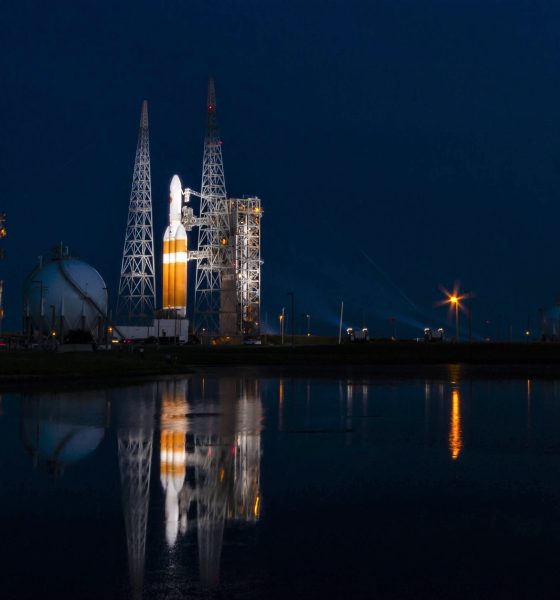
News
NASA spacecraft ready for voyage to the Sun on SpaceX competitor’s biggest rocket (Update)
Update: Issues with rocket and ground support hardware ran down the August 11 launch window. ULA scrubbed the attempt and has recycled the launch to August 12, 3:31 am EDT/07:31 UTC. The second attempt will again be streamed by NASA TV.
#DeltaIV Parker #SolarProbe launch is planned for Sunday, Aug. 12, from Space Launch Complex-37 at Cape Canaveral Air Force Station. The forecast shows a 60 percent chance of favorable weather conditions for launch. The launch time is 3:31 a.m. ET. https://t.co/IUd13yZFEx
— ULA (@ulalaunch) August 11, 2018
Teslarati photographer Tom Cross is on the ground in Cape Canaveral, Florida ahead of what will most certainly be a spectacular launch of NASA’s sun-bound Parker Solar Probe atop SpaceX competitor ULA’s (United Launch Alliance) Delta IV Heavy, the world’s second most powerful operational rocket.
https://twitter.com/_TomCross_/status/1028082435936997376
Second only to SpaceX’s recently-debuted Falcon Heavy rocket, the Delta IV Heavy (DIVH) is a massive beast of a launch vehicle made up of three single-engine boosters that produce more than 2.1 million pounds of thrust at liftoff. As a side-effect of the rocket’s liquid hydrogen and oxygen fuel choice, DIVH’s booster bodies are a solid 5 meters in diameter (40% wider than Falcon 9) to account for the fact that hydrogen is far less energy-dense than kerosene (Falcon 9’s fuel of choice).
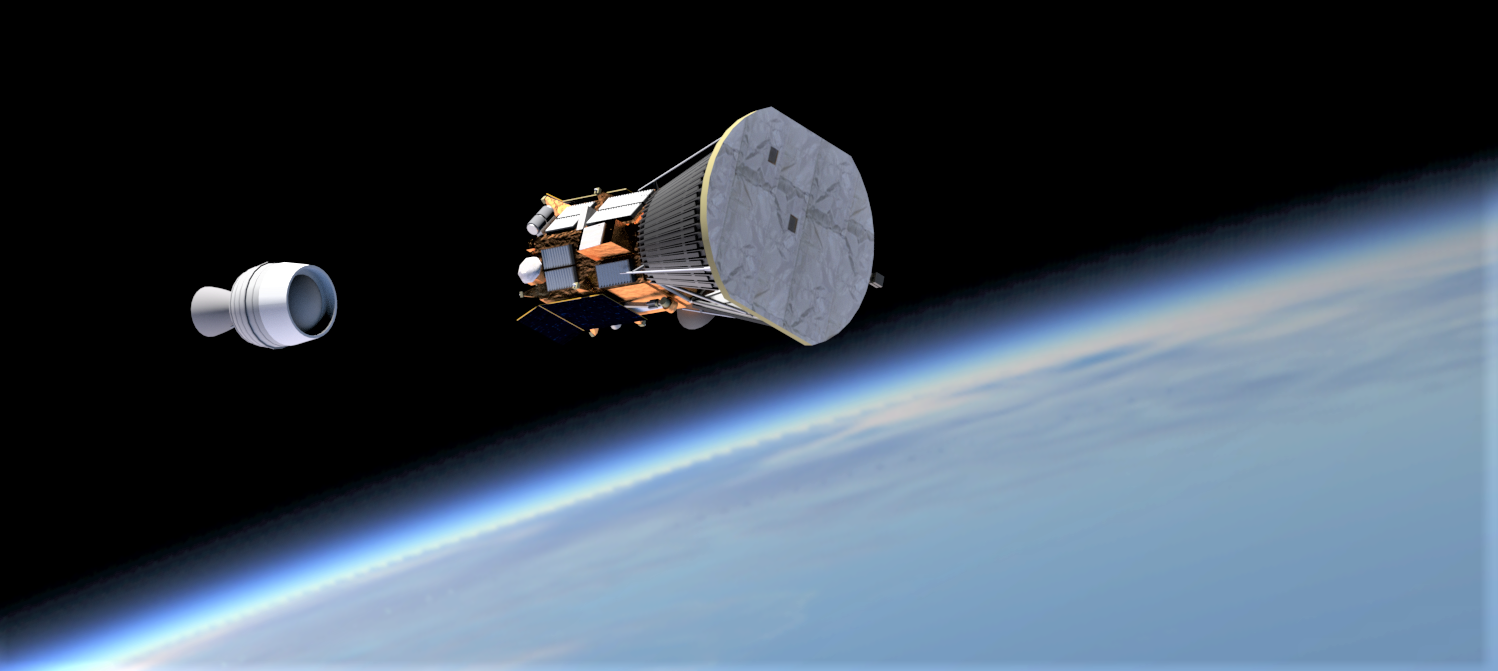
The launch of NASA’s Parker Solar Probe (PSP) will be Delta Heavy’s 10th launch since it first debuted in 2004, giving a taste for how infrequently the rocket typically launches – averaging less than once a year. The target of Parker Solar Probe’s mission happens to be the Sun itself, more specifically the dispersed aura of plasma (superheated gas) – known as the solar corona – that surrounds it.
In pursuit of “touching the surface of the sun”, PSP will wind up becoming the fastest human-made object in history, reaching velocities upwards of 200 km/s (120 mi/s) at a distance from the sun of just 6 million km (3.7 million mi). At that unfathomable speed, Parker Solar Probe would travel from Los Angeles to Manhattan in 20 seconds.
- Delta IV Heavy seen launching a classified NRO payload in 2013. (ULA)
- The first stage of Parker Solar Probe’s Delta IV Heavy rocket prepares to be lifted vertical. (ULA)
- Parker Solar Probe is encapsulated inside Delta IV Heavy’s payload fairing ahead of launch. (NASA)
- Encapsulated in its payload fairing, Parker Solar Probe is craned atop Delta IV Heavy in a process known as vertical integration. (NASA)
That close to the sun, the temperatures PSP will be subjected to are extraordinary, thanks to the fact that sunlight will be a full 500 times more powerful than the light that reaches us humans on and around Earth. To survive temperatures as high as high as 1,377℃ (2,500°F) and keep its highly-sensitive scientific instruments and spacecraft bits at a more reasonable 29.4℃ (85°F), PSP will bring along a heat shield just big enough for the craft to hide behind.
ULA’s Delta IV Heavy is currently scheduled to launch NASA’s Parker Solar Probe from Cape Canaveral at 12:33 am PDT/3:33 am EDT/07:33 UTC. Follow along in real-time with NASA TV’s live coverage of the launch and stay tuned for photos from Teslarati photographer Tom Cross’ remote cameras.
For prompt updates, on-the-ground perspectives, and unique glimpses of SpaceX’s rocket recovery fleet (including fairing catcher Mr Steven) check out our brand new LaunchPad and LandingZone newsletters!

News
Tesla accused of infringing robotics patents in new lawsuit
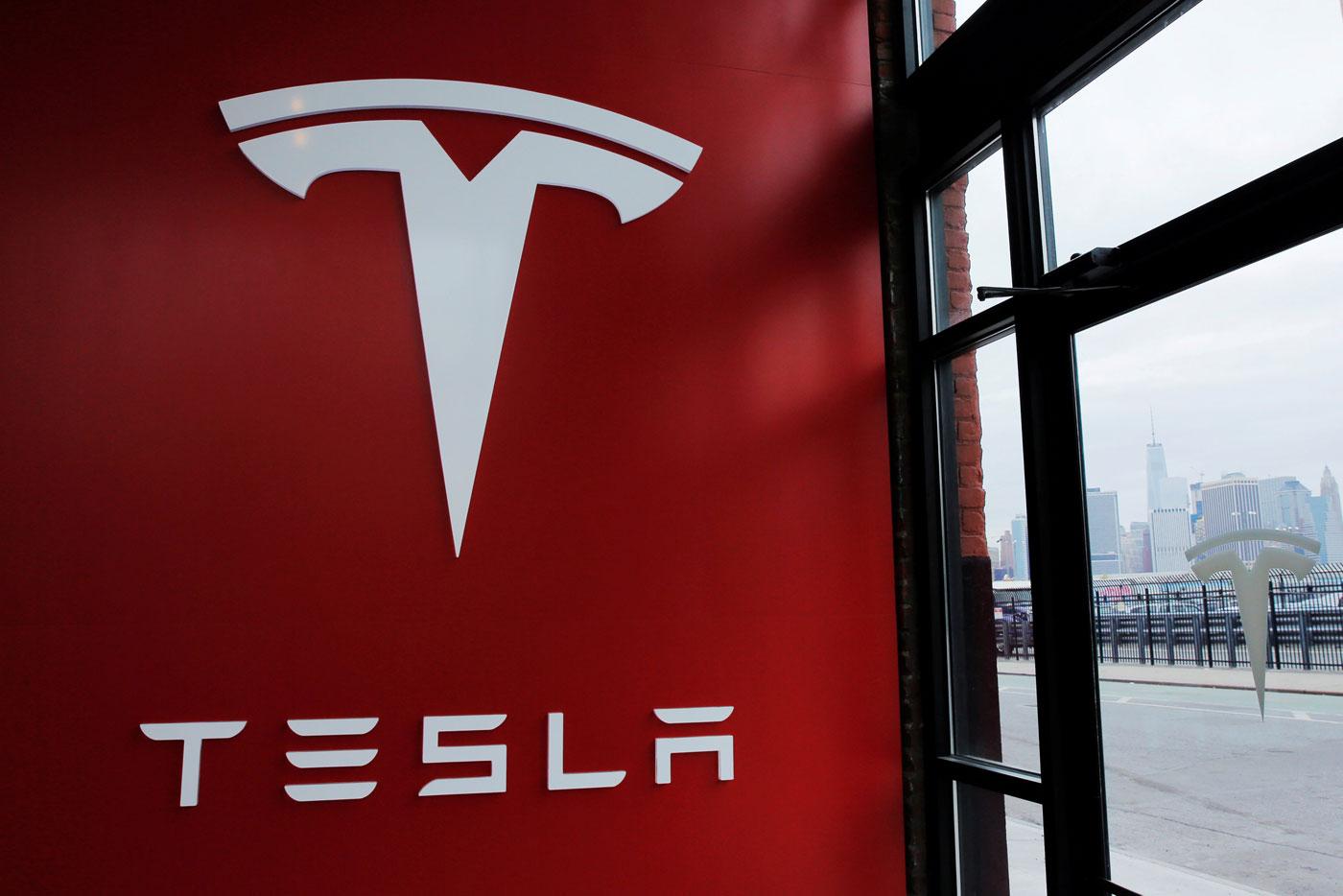
Tesla is being accused of infringing robotics patents by a company called Perrone Robotics, which is based out of Charlottesville, Virginia.
The suit was filed in Alexandria, Virginia, and accuses Tesla of knowingly infringing upon five patents related to robotics systems for self-driving vehicles.
The company said its founder, Paul Perrone, developed general-purpose robotics operating systems for individual robots and automated devices.
Perrone Robotics claims that all Tesla vehicles utilizing the company’s Autopilot suite within the last six years infringe the five patents, according to a report from Reuters.
Tesla’s new Safety Report shows Autopilot is nine times safer than humans
One patent was something the company attempted to sell to Tesla back in 2017. The five patents cover a “General Purpose Operating System for Robotics,” otherwise known as GPROS.
The GPROS suite includes extensions for autonomous vehicle controls, path planning, and sensor fusion. One key patent, U.S. 10,331,136, was explicitly offered to Tesla by Perrone back in 2017, but the company rejected it.
The suit aims to halt any further infringements and seeks unspecified damages.
This is far from the first suit Tesla has been involved in, including one from his year with Perceptive Automata LLC, which accused Tesla of infringing on AI models to interpret pedestrian/cyclist intent via cameras without licensing. Tesla appeared in court in August, but its motion to dismiss was partially denied earlier this month.
Tesla also settled a suit with Arsus LLC, which accused Autopilot’s electronic stability features of infringing on rollover prevention tech. Tesla won via an inter partes review in September.
Most of these cases involve non-practicing entities or startups asserting broad autonomous vehicle patents against Tesla’s rapid iteration.
Tesla typically counters with those inter partes reviews, claiming invalidity. Tesla has successfully defended about 70 percent of the autonomous vehicle lawsuits it has been involved in since 2020, but settlements are common to avoid discovery costs.
The case is Perrone Robotics Inc v Tesla Inc, U.S. District Court, Eastern District of Virginia, No. 25-02156. Tesla has not yet listed an attorney for the case, according to the report.
News
Tesla has passed a critical self-driving milestone Elon Musk listed in Master Plan Part Deux
Tesla China announced that the company’s Autopilot system has accumulated 10 billion kilometers of driving experience.
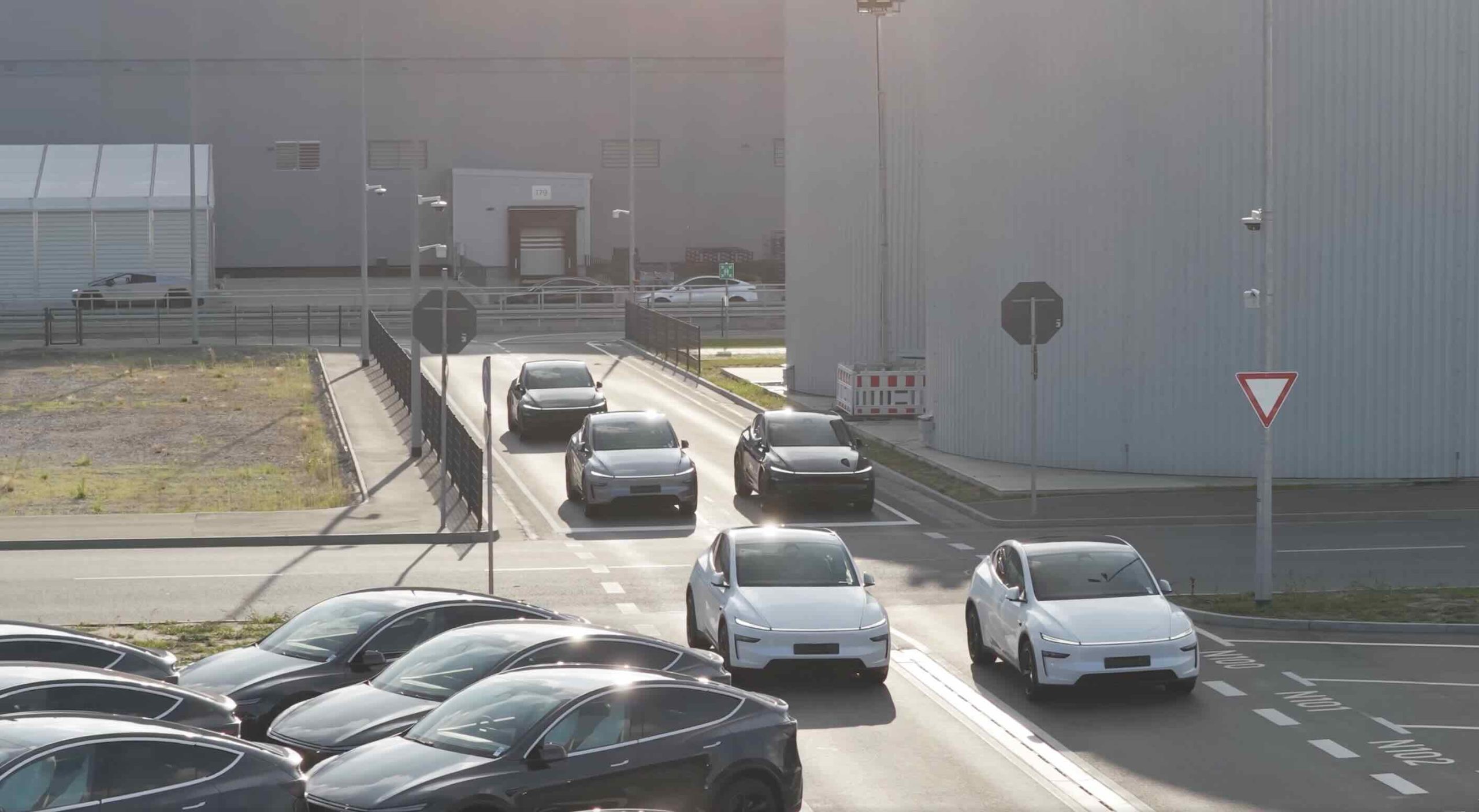
Tesla has passed a key milestone, and it was one that CEO Elon Musk initially mentioned more than nine years ago when he published Master Plan, Part Deux.
As per Tesla China in a post on its official Weibo account, the company’s Autopilot system has accumulated over 10 billion kilometers of real-world driving experience.
Tesla China’s subtle, but huge announcement
In its Weibo post, Tesla China announced that the company’s Autopilot system has accumulated 10 billion kilometers of driving experience. “In this respect, Tesla vehicles equipped with Autopilot technology can be considered to have the world’s most experienced and seasoned driver.”
Tesla AI’s handle on Weibo also highlighted a key advantage of the company’s self-driving system. “It will never drive under the influence of alcohol, be distracted, or be fatigued,” the team wrote. “We believe that advancements in Autopilot technology will save more lives.”
Tesla China did not clarify exactly what it meant by “Autopilot” in its Weibo post, though the company’s intense focus on FSD over the past years suggests that the term includes miles that were driven by FSD (Beta) and Full Self-Driving (Supervised). Either way, 10 billion cumulative miles of real-world data is something that few, if any, competitors could compete with.
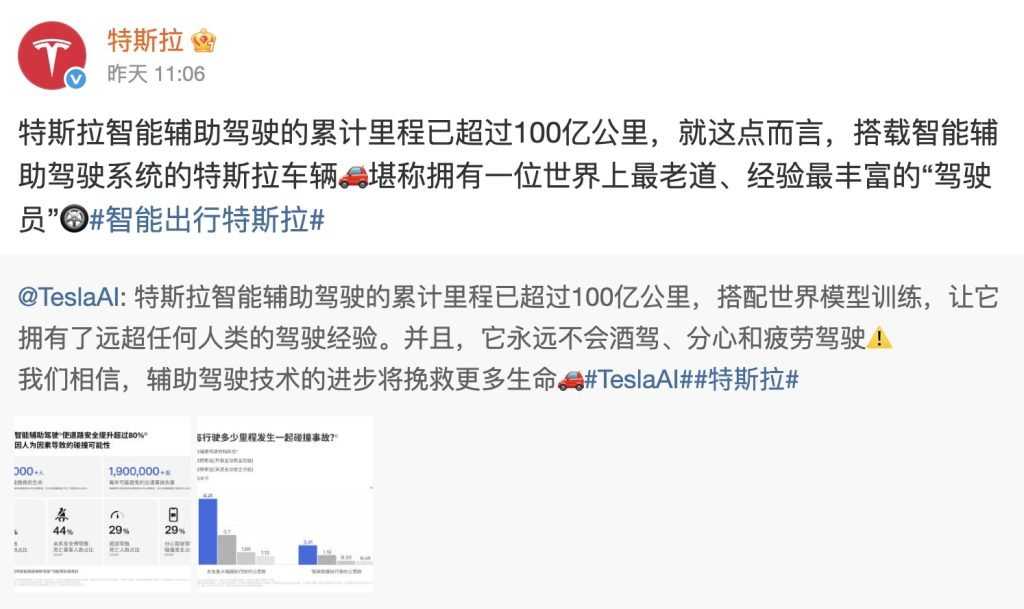

Elon Musk’s 10-billion-km estimate, way back in 2016
When Elon Musk published Master Plan Part Deux, he outlined his vision for the company’s autonomous driving system. At the time, Autopilot was still very new, though Musk was already envisioning how the system could get regulatory approval worldwide. He estimated that worldwide regulatory approval will probably require around 10 billion miles of real-world driving data, which was an impossible-sounding amount at the time.
“Even once the software is highly refined and far better than the average human driver, there will still be a significant time gap, varying widely by jurisdiction, before true self-driving is approved by regulators. We expect that worldwide regulatory approval will require something on the order of 6 billion miles (10 billion km). Current fleet learning is happening at just over 3 million miles (5 million km) per day,” Musk wrote.
It’s quite interesting but Tesla is indeed getting regulatory approval for FSD (Supervised) at a steady pace today, at a time when 10 billion miles of data has been achieved. The system has been active in the United States and has since been rolled out to other countries such as Australia, New Zealand, China, and, more recently, South Korea. Expectations are high that Tesla could secure FSD approval in Europe sometime next year as well.
Elon Musk
SpaceX maintains unbelievable Starship target despite Booster 18 incident
It appears that it will take more than an anomaly to stop SpaceX’s march towards Starship V3’s refinement.

SpaceX recently shared an incredibly ambitious and bold update about Starship V3’s 12th test flight.
Despite the anomaly that damaged Booster 18, SpaceX maintained that it was still following its plans for the upgraded spacecraft and booster for the coming months. Needless to say, it appears that it will take more than an anomaly to stop SpaceX’s march towards Starship V3’s refinement.
Starship V3 is still on a rapid development path
SpaceX’s update was posted through the private space company’s official account on social media platform X. As per the company, “the Starbase team plans to have the next Super Heavy booster stacked in December, which puts it on pace with the test schedule planned for the first Starship V3 vehicle and associated ground systems.”
SpaceX then announced that Starship V3’s maiden flight is still expected to happen early next year. “Starship’s twelfth flight test remains targeted for the first quarter of 2026,” the company wrote in its post on X.
Elon Musk mentioned a similar timeline on X earlier this year. In the lead up to Starshp Flight 11, which proved flawless, Musk stated that “Starship V3 is a massive upgrade from the current V2 and should be through production and testing by end of year, with heavy flight activity next year.” Musk has also mentioned that Starship V3 should be good enough to use for initial Mars missions.
Booster 18 failure not slowing Starship V3’s schedule
SpaceX’s bold update came after Booster 18 experienced a major anomaly during gas system pressure testing at SpaceX’s Massey facility in Starbase, Texas. SpaceX confirmed in a post on X that no propellant was loaded, no engines were installed, and personnel were positioned at a safe distance when the booster’s lower section crumpled, resulting in no injuries.
Still, livestream footage showed significant damage around the liquid oxygen tank area of Booster 18, leading observers to speculate that the booster was a total loss. Booster 18 was among the earliest vehicles in the Starship V3 series, making the failure notable. Despite the setback, Starship V3’s development plans appear unchanged, with SpaceX pushing ahead of its Q1 2026 test flight target.












